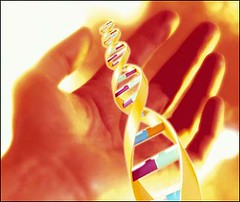 I've finally completed my paper on animal uplift: All Together Now: Developmental and ethical considerations for biologically uplifting nonhuman animals. It's been published at the Institute for Ethics and Emerging Technologies site under the monograph series.
I've finally completed my paper on animal uplift: All Together Now: Developmental and ethical considerations for biologically uplifting nonhuman animals. It's been published at the Institute for Ethics and Emerging Technologies site under the monograph series. This paper is the fleshed out and refined version of the presentation that I gave at the IEET's HETHR conference at Stanford last May.
Here's the abstract (comments welcome):
As the potential for enhancement technologies migrates from the theoretical to the practical, a difficult and important decision will be imposed upon human civilization, namely the issue as to whether or not we are morally obligated to biologically enhance nonhuman animals and integrate them into human and posthuman society. Precedents for intra-species cultural uplift abound in human history, providing both sobering and edifying episodes showcasing the possibilities for the instigated and accelerated advancement of technologically delayed societies. As a number of scientists, philosophers and futurists have recently argued, there is mounting evidence in support of the suggestion that these historical episodes are symptomatic of a larger developmental trend, namely the inexorable and steady advancement of intelligence. Civilizational progress necessarily implies increasing levels of organization and refinement across all realms of activity. Consequently, the status of nonhuman species and the biosphere will eventually come under the purview of guided intelligence rather than autonomous processes. That said, a developmental tendency towards uplift does not imply that it is good or right; more properly, it can be argued that uplift scenarios do in fact carry moral currency. Through the application of Rawlsian moral frameworks, and in consideration of the acknowledgement of legally recognized nonhuman persons, it can be shown that the presence of uplift biotechnologies will represent a new primary good and will thus necessitate the inclusion of highly sapient nonhumans into what has traditionally been regarded as human society. In addition to issues of distributive justice, the Rawlsian notion of original position can be used to answer the question of whether or not there is consent to uplift. Finally, it will be shown that the presence of uplift biotechnologies in the absence of the legal recognition of nonhuman persons and a mandate for responsible uplifting will ultimately lead to abuse, adding another important consideration to the uplift imperative.Tags: animal uplift, bioethics, animal rights, personhood, cultural uplift, distributive justice, transhumanism, future of life, futurism.

We (Russian Transhumanist Movement) have a journalist (from UTRO.RU), who was very interested in animal uplift. He wants to write a small article about it.
ReplyDeleteSeveral questions:
1) Could you give an email interview (I assume yes) - someone will translate between English and Russian?
2) I have collected some links at our content wiki (password "1"). If you could add some relevant links that could be used by the journalist during his research (or that we could later use for our site), that would be delightful.
3) What is the best article (comprehensive, easy to understand and brief) on animal uplift that we could translate and post on our site? Does your paper fit all these criteria (I suspect not, but I haven't yet read it)?